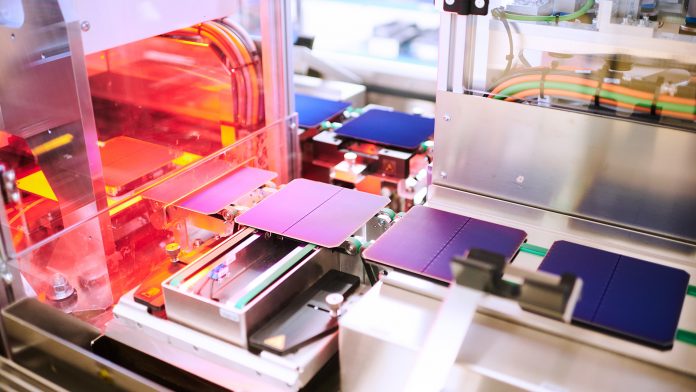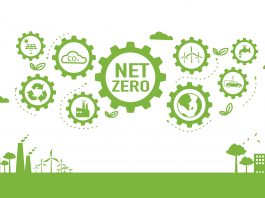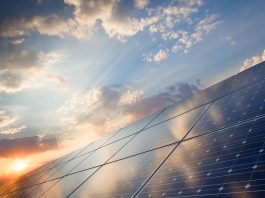The world is switching to green energy, and Europe is presented with an opportunity to ensure solar energy plays the critical role it is meant to.
The European solar manufacturing landscape is at a critical crossroads, with a perfect storm emerging. Over ordering on the demand side, combined with overcapacity on the supply side, has resulted in a record drop in prices for solar modules and other system components. It has never been more important for the EU to advance its industrial strategy for solar PV and support European solar manufacturers.
This is where research and innovation (R&I) comes in. Expanding the European solar manufacturing base also requires an expansion of the EU’s R&I activities. Increased investments in innovative technologies are a key component in the long-term reindustrialisation of Europe’s solar manufacturing base.
Undoubtedly, R&I has been high on the Commission’s agenda. Under Horizon Europe, the EU’s key R&I funding programme, the Commission has allocated a significant budget of €95.5bn. More than 40% of that fund – €40bn – is earmarked for research that supports the European Green Deal.
Previously, the Commission invested €4.99bn towards clean energy technologies under its Horizon 2020 programme; only 10% of this was earmarked for PV projects. The Directorate-General for Research and Innovation has promised to help Europe “stay ahead of the game, and accelerate the roll-out of the EU’s strategic net-zero technologies,” like solar PV.
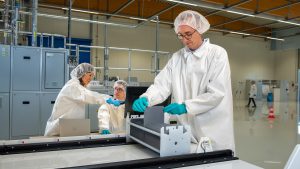
Solar has also been booming across Europe, especially in the last three years. Over 40GW of solar was installed in 2022, nearly double what was installed the previous year. Already in the first half of 2023, solar generation grew by 13%, according to a recent Ember report.
We have truly entered a thriving solar era, with record drops in fossil fuel generation. Every year, solar generation and installation numbers are increasing.
The R&I challenge
With solar numbers on the rise, and the EU setting its R&I agenda, you might wonder what the issue is? The reality is that the rest of the world has also woken up to the strategic role of solar. China is by far the world leader in the manufacturing of solar. The US has the Inflation Reduction Act which is spurring a boom in American solar manufacturing. India, Turkey, and South Africa are all making similar moves.
There are a number of solutions that EU leaders can take to ensure that European solar manufacturing plays a significant role in the globalised solar supply chain, like changing subsidy rules, setting up a dedicated financing instrument, and delivering ‘resilience’ auctions under the incoming Net-Zero Industry Act.
One wider tool we can’t forget is the role of R&I in supporting Europe’s manufacturing base – the critical link between ‘labs’ and ‘fabs’. The Fraunhofer Institute for Solar Energy Systems (ISE) has found that in Germany, PV technology development has delivered cost reductions of 36% per year on average since 2010, thanks to a combination of upscaling of manufacturing, and continued R&I advancements.
According to the Commission’s third Progress Report on the Competitiveness of Clean Energy Technologies, half of the EU’s greenhouse gas reductions expected by 2050 will require technologies that are not yet commercially available. Solar PV alone is set to generate more than 60% of the EU’s electricity by 2050, requiring more private and public investment into clean energy research.
The perovskite potential
The development of new cell technologies like perovskite solar cells reflect the necessity of expanded R&I investments in European solar manufacturing. In May 2023, Oxford PV, a perovskite solar manufacturer, set the record for the highest recorded efficiency of any commercial-sized solar cell in its Brandenburg an der Havel factory in Germany.
The cell converted 28.6% of the sun’s energy into electricity, and was made by placing a thin film of the perovskite material onto a conventional silicon solar cell. The combined ‘perovskite-on-silicon’ tandem solar cell achieves a conversion efficiency that is substantially higher than that of mainstream silicon-only solar cells, which average 22–24%.
Commenting on the achievement, David Ward, Chief Executive Officer at Oxford PV, noted that their, “innovative solar cells are close to being in the hands of our module-manufacturing customers,” with the focus now on ramping up production.
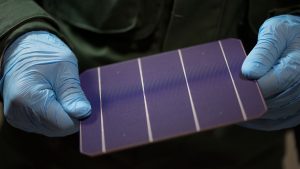
Recent findings from a team at the University of Surrey have also illustrated the potential of perovskite. They found that a nanoscale ‘ink’ coating improved the perovskite solar cells’ stability, making them suitable for mass production.
Researchers made this breakthrough when they discovered an aluminium oxide that minimises the drop in efficiency during the conditioning of perovskite solar cells. Perovskite has also been used to create self-healing solar panels on satellites in low-Earth orbit that can recover 100% of their efficiency, even after being damaged by radiation in space.
In general, the perovskite material is lighter and cheaper than a silicon-based solar cell, and is extremely efficient. It has even been praised as a ‘miracle material,’ a label earned with recent developments. When it reaches the market at scale, it will transform the PV sector.
All of these findings have emerged from investments into one innovative technology. The European solar PV sector’s research representation to the European Commission – ETIP PV – has made the point that getting R&I to production scale will require continuous EU funding.
Otherwise, we risk only investing in technologies that will one day be obsolete, especially given the acceleration of innovation cycles.
For example, fully realising the potential of perovskite solar cells will require more funding to facilitate its mass-production, and improve its shelf life; currently, perovskite deteriorates quickly when exposed to light, voltage, or heat.
More research will also be required to substitute the lead currently used in perovskite solar cells, for a more eco-friendly alternative, while retaining its efficiency.
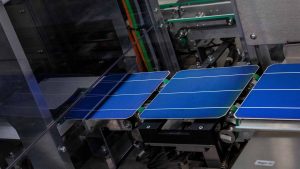
A step forward for European solar manufacturing
Undoubtedly, the EU is leading in several areas of PV research and innovation, including in perovskite tandem solar cells. Oxford PV, Fraunhofer ISE, and Helmholtz-Zentrum Berlin, all European research and development bases, hold global solar cell conversion efficiency records.
However, rapid advancements in R&I investments by public and private actors in other regions are catching up to the EU, and threaten to leave it behind, especially when it comes to the industrialisation of R&I.
For example, in June, at a Shanghai trade show, a Chinese manufacturer already announced its plans to commercialise a perovskite solar cell. The EU is already lagging behind in the production of ingots and wafers, an important segment of solar manufacturing. It has also seen a notable loss of expertise in key segments of the PV R&I landscape.
Just like investments in manufacturing, the EU will need to expand and intensify its R&I investments if it wants to keep up, especially with its renewed ambitions for PV manufacturing.
Alongside renewed investments in PV manufacturing capacity, the EU must also invest in the industrialisation of the results of R&I efforts, and strengthen its investments towards developing the next generation of PV technologies.
For example, the perovskite potential will be lost without a strong investment commitment to bridging the manufacturing gap and delivering innovation at scale.
The ETIP PV White Paper on manufacturing puts it best: adequate financing is needed throughout the EU PV value chain. Many solutions can be implemented to accelerate R&I financing at the European level. This could include relaxing the EU’s State Aid rules – its Temporary Crisis and Transition Framework (TCTF) – to accelerate the channelling of funding towards projects.
The rebirth and long life of European solar manufacturing needs a strong research and innovation base. Europe has its part to play in the world’s solar manufacturing story.
Innovations like perovskite solar cells are just one example waiting on the horizon, reflecting the potential of R&I investments to revolutionise the solar industry.
However, the PV manufacturing storm is still brewing; sustained and increased investments in EU R&I investments will help build resilience against this storm. Left unchecked, this storm will only get worse.
Now is the time to double down on EU research and innovation, so that we can guarantee the EU’s solar renaissance.
Please note, this article will also appear in the sixteenth edition of our quarterly publication.

